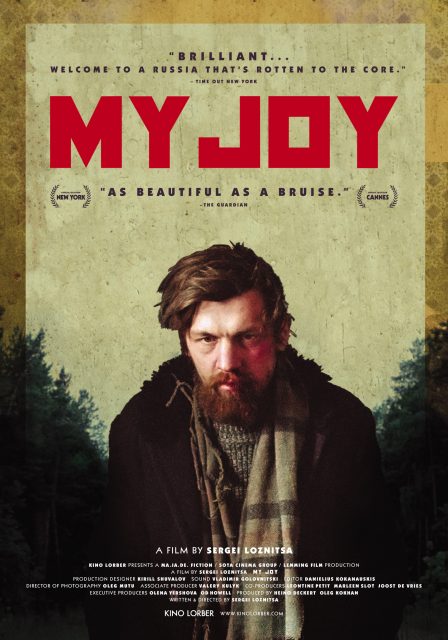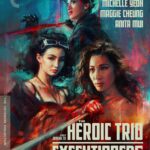Home Video Hovel: My Joy, by Scott Nye

In spite of the audience demand that cinema operate more like a novel or play with an emphasis on story and character, very few films really capture the pleasure of an expansive, ponderous piece of literature. When one reads East of Eden, for example, one is reading not just the story of one man and the people closest to him but the story of his environment, ancestors, legacy, community and the time in which he lived. Sergei Loznitsa’s My Joy is very much a similar experience, taking time and initiative to divert physically, temporally and chronologically to encapsulate the full breadth of post-Communist Russia; it is a vision at once intensely specific and unbelievably vast.
Georgy is a truck driver who, after avoiding an arrest at a roadside check, wanders off the main highway to stay one step ahead of the law. But he’s unprepared for the wilds to which he’s headed – the road is more threatening and more removed than he could have expected. My Joy is a stark, minimalist, grueling and novelistic film, constructed of long takes that are employed to explore the environment that drives its protagonist to ruin and near-madness.
The plot of My Joy is difficult to describe beyond that, partially because what I’ve said already gets you well past the film’s half-hour point. It’s light on plot but its density is unrivaled and if one finds it a rather slow viewing experience, it is equally because of the length of the shots (its average shot length is nearly a minute) and the thoroughness with which Loznitsa employs them. His background as a documentarian (this is his first narrative film) is most obvious as he wanders through villages and markets, staring into the abyss of destitution, but it’s also evident in his more straightforward scenes with an emphasis on capturing as much of his characters’ behavior as his camera will allow. It should further be noted that I never use the term “slow” as a negative – why should someone want their viewing experience to feel as though it barely existed? – but at 128 minutes, My Joy feels like a much longer film in its rigor.
Though one longs for a Blu-ray to better experience Loznitsa’s beautiful vistas, Kino Lorber has done a marvelous job transferring the film to DVD. My Joy offers a wide range of tones, from the pitch-black of night to blinding snowscapes; those and everything in between come out clear and striking. Loznitsa’s sound design is of particular note, putting the noise of his environments nearly on equal footing with his dialogue but Kino doesn’t allow one to overwhelm the other. Much in keeping with the thematic point of the film, both coexist, informing the other.
Nothing to speak of in the way of special features, unfortunately. We get trailers for My Joy; Tuesday, After Christmas; and United Red Army, as well as a stills gallery, featuring low-res stills from the film you just watched.
My Joy is a really stunning experience, one I’m sad to have missed out on in theaters but am thrilled to now experience on DVD. It’d make for a fine blind buy – the density of the film and its constantly-unfolding pleasures far eclipsing the spareness of the package – but it deserves a rent at the very least.





























I love this film, but ecen in a second viewing am a bit puzzled and confused by some of the details. For example, when did the main story take place? How does the segment where the farmer gets killed by the soldiers whom he gave shelter to, how does that fit with the main narrative? And, the fellow with the beard, who, I think, is suppoaed to be the truck driver, well, he looks much older.
I didn’t, and still do not, know how to reconcile all of the seemingly disparate elements of this film, but am left with a harrowing images of life in Ukraine. What barbarity!